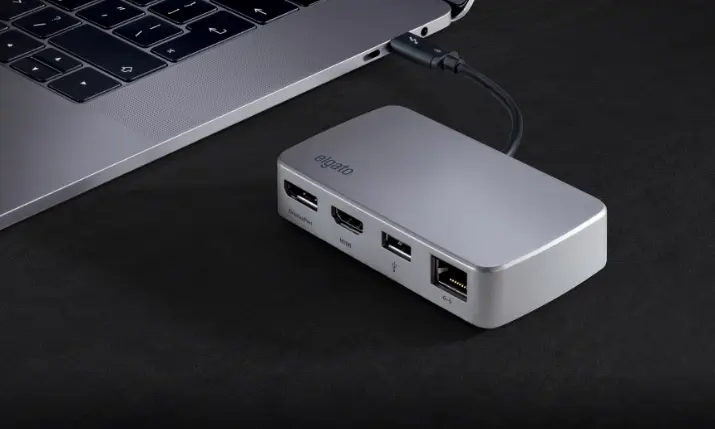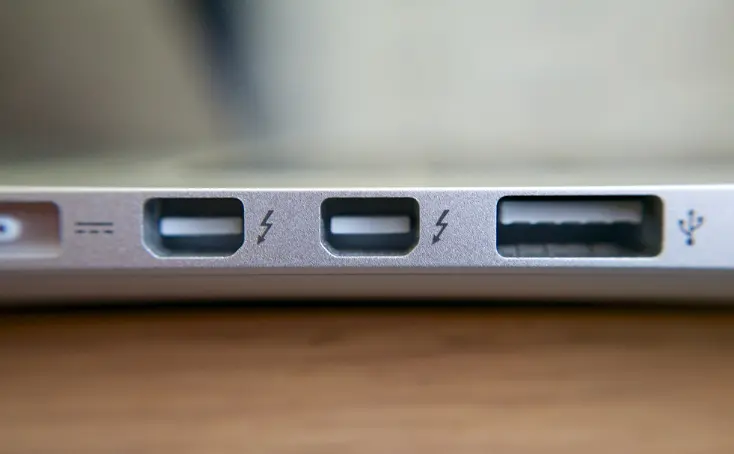In this article, we will delve into the key differences between Thunderbolt 3 and Thunderbolt 4, helping you understand the improvements and benefits of the latter.
As technology continues to advance, so does the need for faster and more versatile connectivity options.
Thunderbolt technology has been a game-changer in this regard, offering lightning-fast data transfer speeds
and a wide range of capabilities. Thunderbolt 3 was a significant leap forward,
but Thunderbolt 4 has arrived to push the boundaries even further.
the Differences Between Thunderbolt 3 and Thunderbolt 4

-
Speed and Bandwidth
One of the most noticeable differences between Thunderbolt 3 and Thunderbolt 4 is the speed and bandwidth they offer.
Thunderbolt 3 boasts a maximum data transfer rate of 40 Gbps, which is already impressive.
However, Thunderbolt 4 takes it a step further with the same maximum data transfer rate
but with enhanced protocols to ensure consistent performance across all Thunderbolt 4 devices.
This means you can expect a more reliable and stable connection for your high-speed data transfer needs.
-
Compatibility
When it comes to compatibility, Thunderbolt 3 and Thunderbolt 4 devices can be somewhat confusing. Thunderbolt 4 maintains backward compatibility with Thunderbolt 3, which means you can use Thunderbolt 3 devices with a Thunderbolt 4 port without any issues. However, the reverse is not true. Thunderbolt 3 does not support Thunderbolt 4 devices. This makes Thunderbolt 4 a more future-proof choice if you plan to upgrade your devices in the long run.
-
USB-C Integration
Both Thunderbolt 3 and Thunderbolt 4 use the same USB-C physical connector, which is a reversible and versatile connector found in many modern devices. However, Thunderbolt 4 improves upon Thunderbolt 3 by requiring that all Thunderbolt 4 ports support USB4, USB 3.2, and DisplayPort 1.4 protocols. This means Thunderbolt 4 is more versatile when it comes to connecting various peripherals and displays.
-
Improved Daisy-Chaining
Thunderbolt technology has always been known for its daisy-chaining capabilities, allowing you to connect multiple devices in a chain using a single Thunderbolt port on your computer. Thunderbolt 4 takes this to the next level by supporting up to four Thunderbolt devices in a single chain, whereas Thunderbolt 3 supports only two. This enhanced daisy-chaining feature can be especially useful for professionals who need to connect multiple high-speed peripherals, such as external storage, displays, and docking stations.
-
Power Delivery
Both Thunderbolt 3 and Thunderbolt 4 support Power Delivery (PD) to charge and power devices. However, Thunderbolt 4 requires that a Thunderbolt 4 port provides a minimum of 15 watts of power, which is an improvement over Thunderbolt 3’s 7.5 watts. This means Thunderbolt 4 can deliver more power to charge laptops, tablets, and other devices faster and more efficiently.
Thunderbolt 4 builds upon the already impressive Thunderbolt 3 technology by offering consistent high-speed performance, improved compatibility, and enhanced versatility. While Thunderbolt 3 remains a viable option for many users, Thunderbolt 4 is a clear choice for those who demand the latest and greatest in connectivity technology.
With faster data transfer speeds, improved daisy-chaining capabilities, and better power delivery, Thunderbolt 4 is well-suited for professionals and enthusiasts who require top-notch performance and flexibility in their computing setups. As technology continues to evolve, Thunderbolt 4 represents a significant step forward in the world of high-speed data connectivity.
The Advantages of Thunderbolt 4 Over Thunderbolt 3

-
Security Features
Another significant improvement in Thunderbolt 4 is its focus on security.
It includes Intel’s VT-d-based direct memory access (DMA) protection, which helps safeguard your data from potential security threats. This enhanced security feature ensures that only trusted Thunderbolt devices can access your system’s memory, reducing the risk of unauthorized access or data breaches.
-
Longer Cable Lengths
Thunderbolt 4 also extends the maximum cable length for passive Thunderbolt cables compared to Thunderbolt 3.
While Thunderbolt 3 passive cables had a maximum length of about 2 meters (6.6 feet),
Thunderbolt 4 passive cables can reach up to 2.8 meters (9.2 feet). This extra length can be useful in setups where you need to place devices farther from your computer without sacrificing performance.
-
Easier Cable Identification
To make it easier for users to identify Thunderbolt cables and their capabilities,
Thunderbolt 4 cables come with a lightning bolt icon on their connectors. This helps prevent confusion and ensures that you’re using the right cable for your Thunderbolt 4 devices, enhancing the overall user experience.
-
More Efficient Resource Allocation
Thunderbolt 4 also introduces improved resource allocation for connected devices.
It can allocate PCIe lanes more efficiently, which means that devices connected via Thunderbolt 4 can receive the bandwidth they need without causing congestion or reduced performance for other devices in the chain. This is particularly beneficial for setups involving multiple high-bandwidth peripherals.
Read more: Achieving CMMC Compliance for DoD Contractors
“Elevating Connectivity: Thunderbolt 4 Surpasses Thunderbolt 3 in Speed, Security, and More”

Thunderbolt 4 represents a significant advancement over Thunderbolt 3 in terms of speed, compatibility, versatility, security, and overall user experience. While Thunderbolt 3 has been a valuable technology for many users, Thunderbolt 4 raises the bar by delivering consistent high-speed performance, enhanced security features, and improved cable lengths.
For users who require the latest and most robust connectivity options, Thunderbolt 4 is the clear choice.
Its compatibility with Thunderbolt 3 devices ensures a seamless transition for users looking to upgrade their systems,
and its enhanced capabilities make it an excellent choice for professionals, creatives, and tech enthusiasts who demand top-notch performance and versatility in their computing setups.
As technology continues to evolve, Thunderbolt 4 sets a new standard for high-speed data connectivity, providing users with a future-proof solution that can meet the demands of the most data-intensive tasks and applications. Whether you’re a professional seeking maximum productivity or a technology enthusiast exploring the latest innovations, Thunderbolt 4 is a technology worth considering for your next upgrade.

